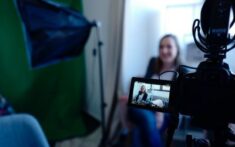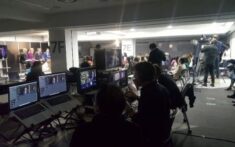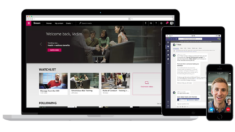From My VW to Your Video Campaigns, is DIY the Right Choice?
CMMA BlogFrom the “maker movement” to how-to videos, we live in a Do It Yourself (DIY) era. Whether it originates from punk rock or anti-consumerism, the movement today leverages technology to connect people with similar interests and empowers them to fix, build, or hack their way through a whole variety of interesting cool projects.
DIY culture has exploded across the U.S., and there is data to back it up:
- There have been over 400 Maker Faires organized around the world since 2012.
- There are 1975 hackerspaces around the world.
- $529 million was pledged to Kickstarter projects in 2014. That’s more than $1,000 a minute.
The infrastructure is there, crowd-based funding is there, and people are showing up to create!
DIY can benefit the individual or group in a variety of ways; including a sense of accomplishment, uncompromised vision, and the democratization of bringing new products to market. These are all very positive results. But for every successful Kickstarter campaign there are multitudes of “Pinterest Fails”. This asks the question: just because you can do something yourself, does it mean you should?
For each project you need to evaluate the risk, the benefits, the urgency, and the cost.
DIY and my 1990 VW Vanagon
I drive an (almost) vintage VW van. It’s old, but the nice thing is that unlike “modern vehicles” you can update and fix things. I’ve replaced the carpet, added an auxiliary battery, and even installed an aftermarket USB charger. But then one day driving up Mt. Constitution on Orcas Island, I blew my engine. The steam billowing out of my exhaust was a strong indication my engine needed to be replaced, and I had to ask myself:
- Do I have the right tools and documentation?
- Do I have the time it takes to figure it out?
- Will it cost more if I do it myself?
- And most importantly – what if I screw this up?
Since I drive the van to work every day, I couldn’t really afford to screw up the job, and because I had no idea what I was doing the risk was, shall we say, high that I would do something wrong. Not to mention all the unknown unknowns.
What if I had a friend who was a mechanic, who could help walk me through it? That significantly changes the outlook on my success. I can leverage their knowledge and expertise, while growing my own and at the same time lowering my risk.
What does my VW have to do with your video strategy?
1. Do you have the right tools and documentation to engage your workforce throughout the enterprise?
With Microsoft’s Teams Live Events and Stream delivered by Kollective, comms teams everywhere now have the capability to reach every worker in the enterprise without harming the network. You have the tools, and you are basically able to do unlimited events without paying additional cost.
2. Do you have the time it takes to figure it out?
Scheduling an event is simplicity itself. But what about producing an event? What about measuring the engagement of the audience over time? How can you tell what content is resonating with which segments of the workforce? Do you have the time for everything that wraps around a video event?
3. Will this end up costing more if you do it yourself?
Do you have internal video production teams? Are you outsourcing? How are you preparing for the event? Is there a communication plan?
4. What if you screw this up?
If your C-suite is in front of the entire company, how tolerant are they of total failures? How high is the pressure?
What about that friend who knows what they’re doing?
The good news is that Kollective doesn’t just empower the delivery of content across your network. We also have an experienced team of seasoned professionals, all former customers, who have been through the digital transformation. The Kollective Enterprise Video Strategy (EVS) Team has helped numerous customers in different ways, in each case tailored to the customer’s specific needs. We’ve seen them provide on-site support for a multi-national all hands meeting, they’ve helped several other customers develop meaningful KPIs around measuring employee engagement, and I’ve even seen them help a customer develop a business case for their video strategy. My point is Kollective’s EVS Team will meet you where you are and get you where you want to go.
So. Is DIY worth it? Is it worth it to swap out your old engine yourself? Yes, it is. If you have success, you will save money, and it’s a tremendous sense of accomplishment IF you can mitigate the risk and stay on top of your learning curve by leveraging the expertise of people who’ve done it before. To my fellow DIYers and makers, best of luck out there.
Read the enterprise video buyers guide
Learn what it takes to pull of enterprise live video events successfully, from event strategy, scaling, analytics and more.
Interested in learning more?
Learn about Nick Vella’s most recent trip to support a customer with their first live streaming events in Japan.
Related Blog Posts
Life With & Without Kollective & Microsoft Teams
Experience a day in the life of Tom and Jerry. Both are communication professionals working for different enterprises. Jerry is all in on video and Microsoft Teams, Tom is not. Microsoft Teams Live Events Scales Communication and Kollective Scales Microsoft Teams Live…
Improve Enterprise Video Communication With These 5 Steps
Using video broadcasts can significantly improve communication across large enterprises, but it is difficult to get right. There are so many pitfalls, particularly as most companies don’t see video production as a core competency. The challenge for them now is that in…
Enterprise Video Broadcasts Increase Culture, Engagement and Productivity
Why has video broadcasting become one of the most vital tools for any large-scale enterprise? It comes down to three key benefits that can boost how a business connects with its own employees: Culture, Engagement and Productivity. An astounding 50% of the global…
The post From My VW to Your Video Campaigns, is DIY the Right Choice? appeared first on Kollective Technology .


















